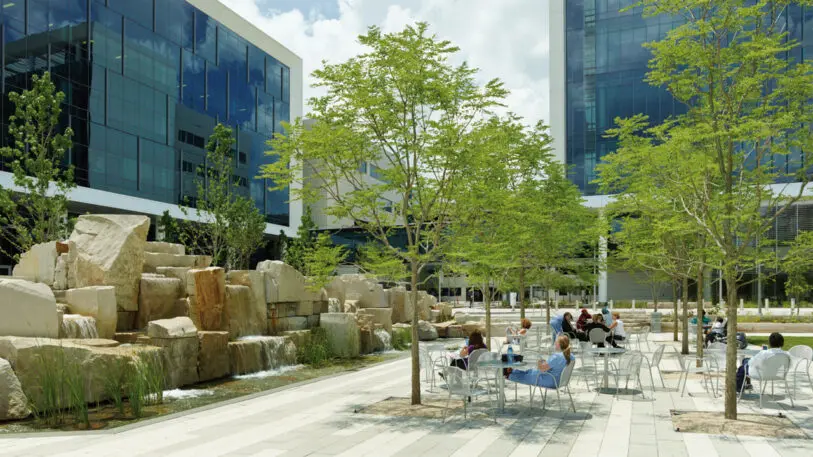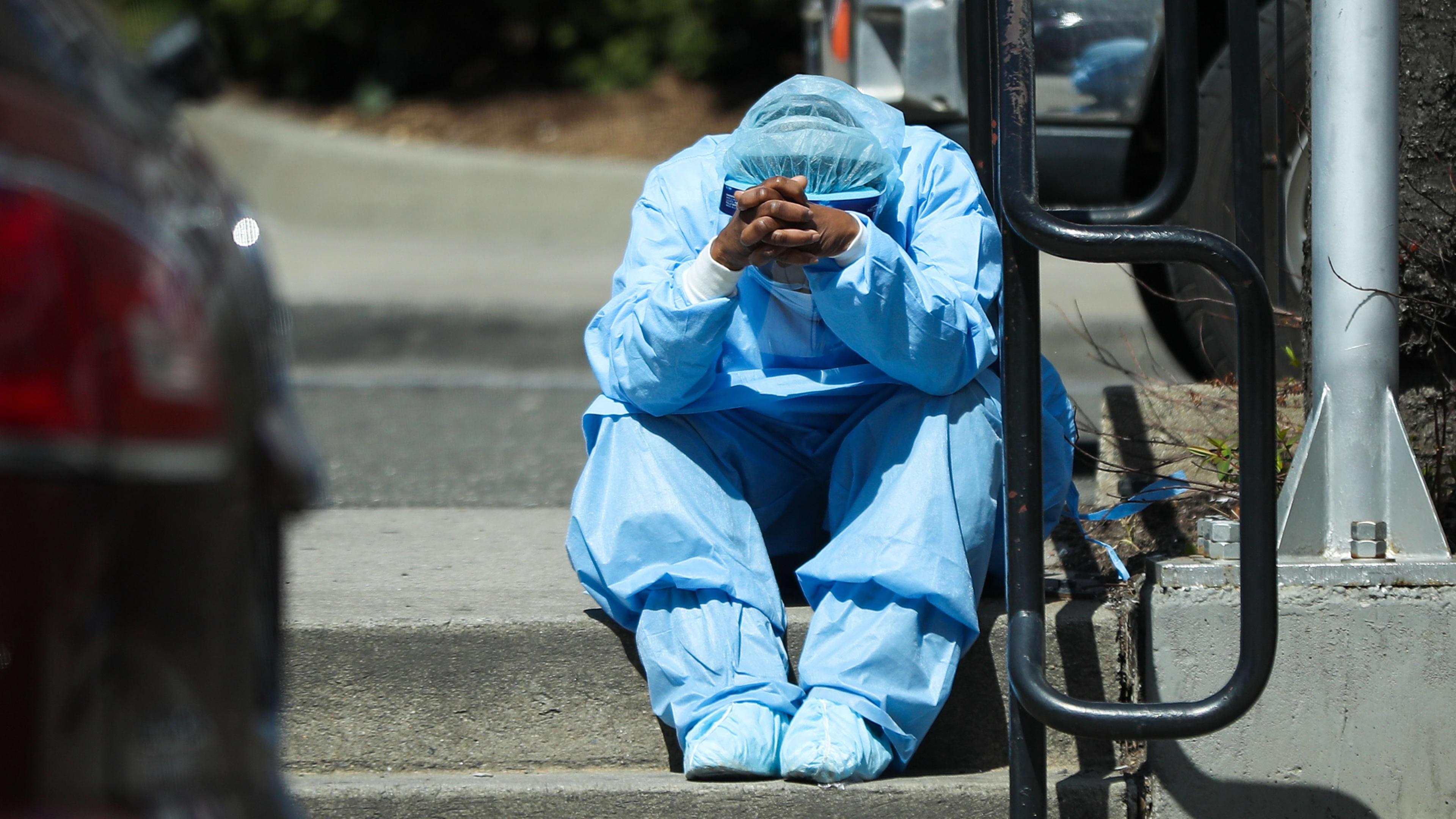Being asked to go to work when nearly everyone else was told to stay home. Seeing people healthy one day and clinging to life the next. Holding patients’ hands. Calling their family members. Stripping off our clothes before walking into the house and collapsing after another 12-hour shift. Wondering if there would still be a ventilator available for us? So much uncertainty. So much death.
Most frontline healthcare workers are still processing what we’ve gone through over the last 16 months. We’re no longer in the thick of it, but we’re still in it. It has been mentally exhausting and physically grueling. Burnout is real.
Working long shifts in COVID ICUs created intense feelings of stress and isolation. But as our patient loads gradually got lighter and we began to decompress, the emotional and physical weight of what we had endured came crashing down on us. We’re left with concerns about post-traumatic stress symptoms and with hopes that our country’s healthcare infrastructure can be bolstered to improve the long-term conditions for hospital staff who, even during non-pandemic times, often suffer from severe occupational stress.
Healthcare organizations should take the opportunity to learn from both the mistakes and solutions that arose during COVID. Rethinking processes and redesigning spaces will do more than just prepare healthcare professionals for another crisis. Going forward, it will always prioritize the mental and physical health of their people.
How can we make it better?
In our dual roles in medicine and healthcare planning and design, we have been sharing our pandemic experiences working in hospital ICUs with our HOK colleagues. Many have asked us how they can improve the experience for frontline hospital personnel. The answers are complicated.
If healthcare workers aren’t feeling well—physically, emotionally, or mentally—they can’t provide the best care for patients. To enable them to meet the demands of their jobs, we must address their own wellness.
Lombardy was the region in Italy hit hardest by the coronavirus. At the height of the crisis, some hospitals there asked their doctors and nurses to work every day for a week and then, to slow virus transmission among their workforce, to quarantine at home for two weeks. Other hospitals around the world also experimented with giving personnel extended time away. These breaks helped them recover from their experiences in high-stress ICU environments.
In addition to mandating time away from the hospital, institutions can alleviate employees’ stress by leveraging technology to streamline workflows. For instance, instead of requiring a staff member to go into a room and physically press the buttons to change the rate of a COVID-19 patient’s IV fluids, they could have used a Bluetooth device to do it remotely. In general, we don’t want to eliminate human contact between caregivers and patients, but during peak COVID-19 treatment times, this would have been a practical solution.
Small gestures can communicate that the organization understands what healthcare workers are up against and wants to make their lives easier. At the height of the pandemic, when most of us were still afraid to go to the grocery store, some hospital cafeterias starting stocking staples like bread and milk, making them available for staff to take home at a minimal cost. Going forward, hospitals can provide employees with amenities like access to on-site childcare and gyms. Even something as simple as giving staff predictable time off to take care of their own health maintenance—from dental and medical checkups to mental health counseling—during normal business hours would go a long way.
During the peak of COVID, taking time to meet with a counselor in a safe, private space could be difficult for some staff members. An embedded cultural ethos of “if not me, then who can help?” meant healthcare workers had a hard time simply walking away when they were gowned up, masked, and caring for severely ill patients whose health could spiral at any moment.
But when our hospitals were packed with COVID patients, we discovered that the additional hospital staff members assigned to help meant that there often were people who could fill in for us for a few minutes. Whether it’s through training or communication programs—or simply allocating more resources to always have more hands on deck—hospitals should facilitate that team-oriented approach.

Restorative environments
Architects and designers can help by taking a holistic approach to designing restorative healthcare spaces. Every part of the hospital building should be a manifestation of the organization’s broader goals of taking care of its people.
Inside the hospital, designers can prioritize daylight, electric lighting strategies that support circadian rhythm, views to the outside, natural ventilation, nontoxic materials, indoor greenery and artwork. They also can give staff easy access to uplifting outdoor spaces for quick breaks. Whether it’s providing views of a garden, a body of water, a city skyline or the sunset, it’s vital for staff to feel connected to what’s going on beyond the hospital walls.
As part of a range of systemic solutions focused on the wellness of healthcare workers, architects also can help make the case for and design specific places of respite for caregivers. Michigan Medicine recently opened three recharge rooms to ease staff stress at its Ann Arbor medical center. The rooms include dimmed lighting, relaxing music, greenery, socially distanced but comfortable seating and tranquil imagery.
It’s true that space is tight in most hospitals. But if we look hard enough, we can find underutilized space—whether it’s an empty office or a patient education room—that can be repurposed as respite areas for staff. When we have the luxury of designing a new facility, we need to build in plenty of flexible spaces that can change to accommodate different uses over time.
These respite spaces must be close enough to patient rooms that they are convenient for caregivers to use. We know from recent personal experience that sitting alone for even five minutes—which may be all the time we can spare—can be rejuvenating.
Andrew M. Ibrahim, MD, MSc, is a surgeon and an assistant professor of surgery, architecture and urban planning at the University of Michigan. He also serves as chief medical officer for HOK’s healthcare practice. Kathleen Schwarz is an ICU nurse at NewYork-Presbyterian Hospital and a senior consultant with HOK’s healthcare consulting group.
Recognize your brand’s excellence by applying to this year’s Brands That Matter Awards before the early-rate deadline, May 3.
